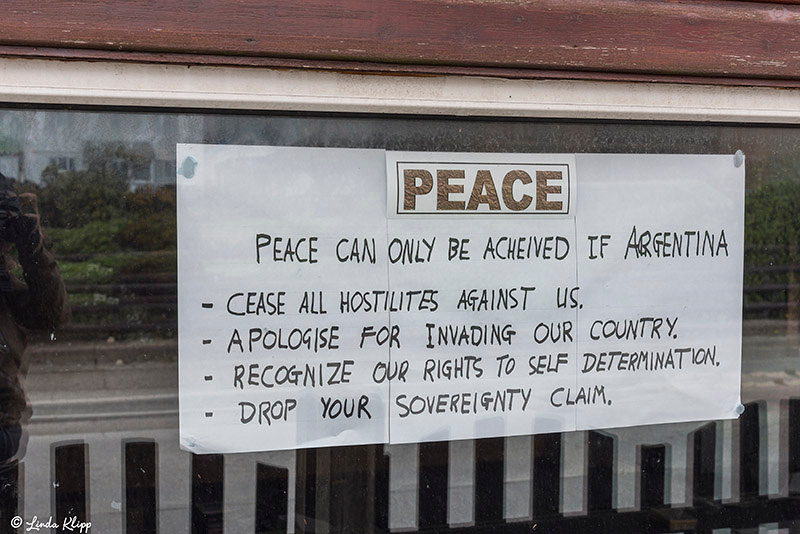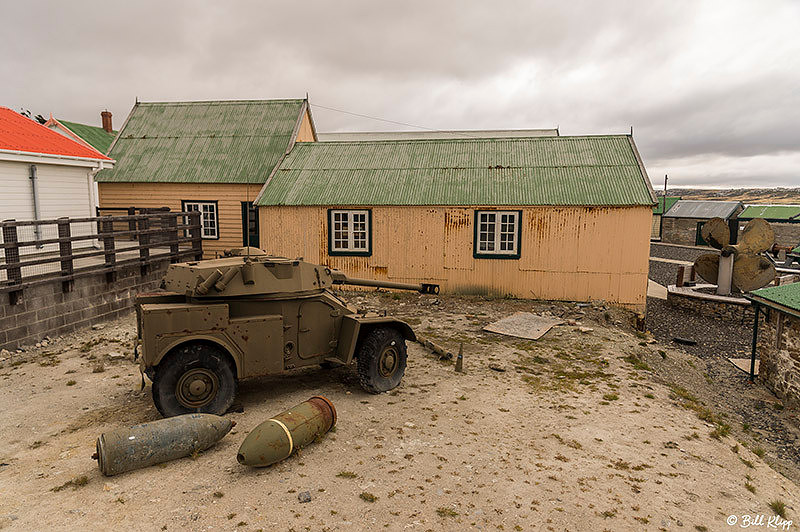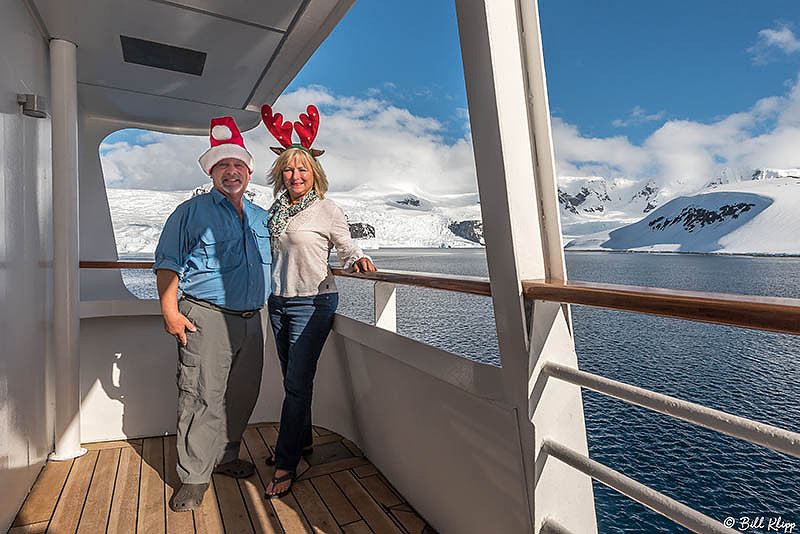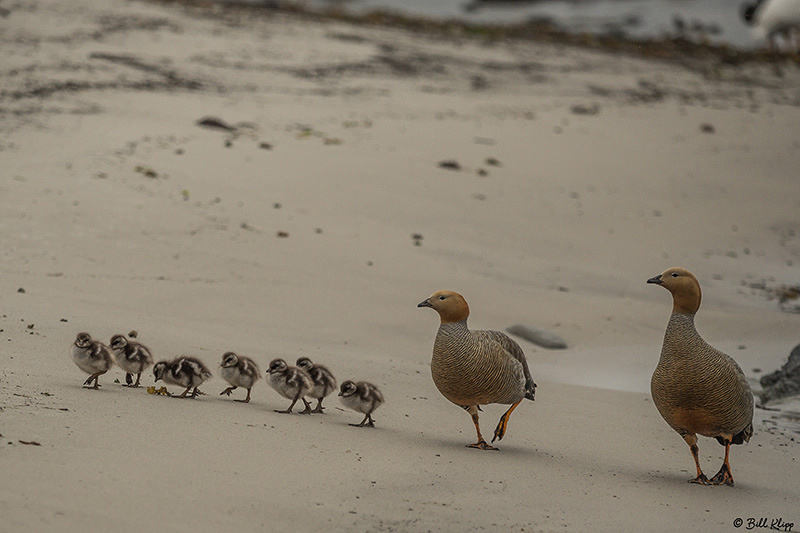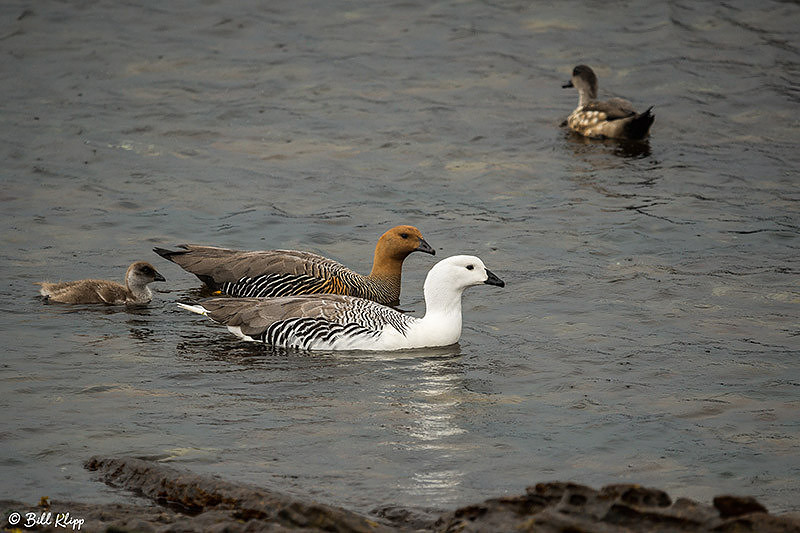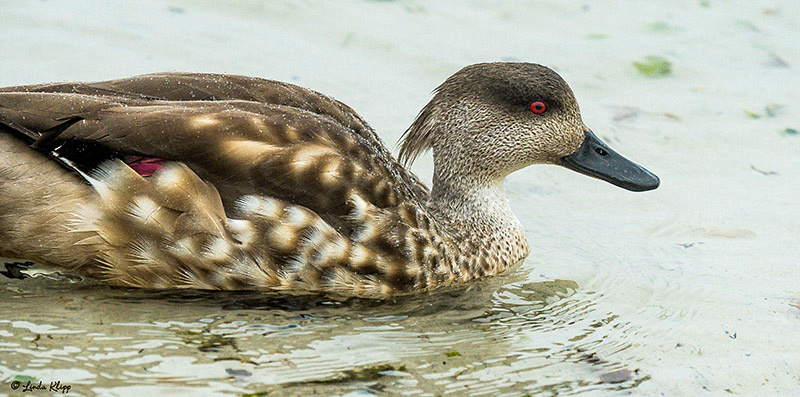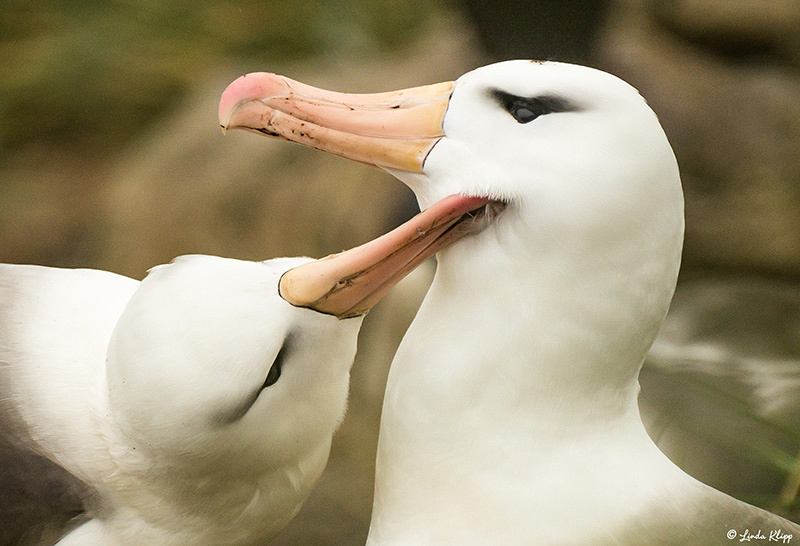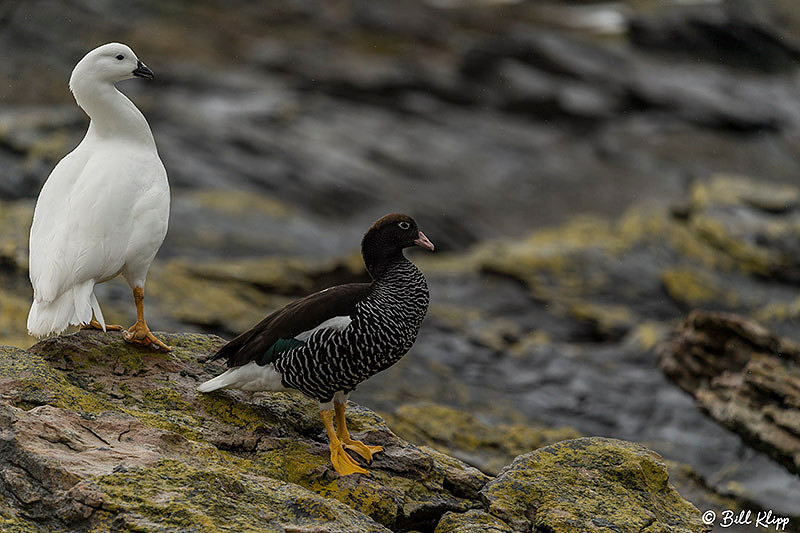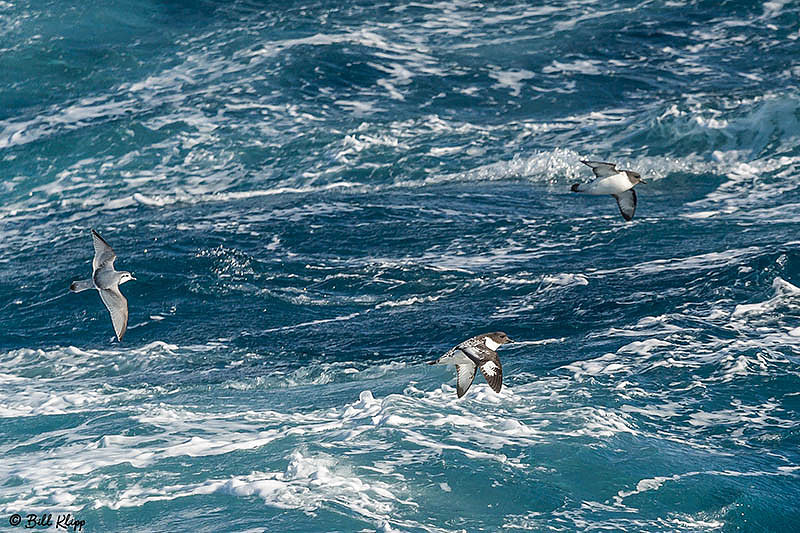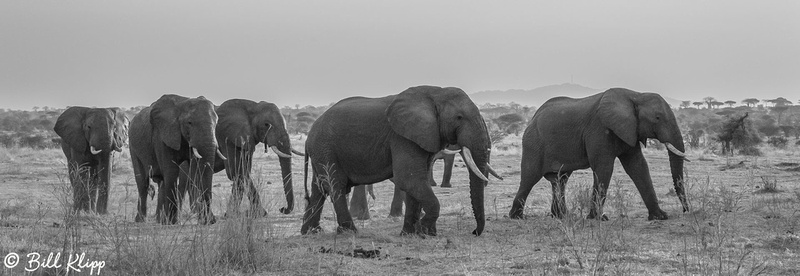


Antarctica Wanderings II – Nov 2017 --- “First Stop; The Falklands”
(Part II of "Antarctica Wanderings" highlights the Falkland Islands as we sail to Antarctica) Photos by Bill & Linda Klipp
Our “Antarctica Wanderings” Blog takes you on our 3rd journey to “Terra Australis Incognita” (the "Unknown Land of the South") starting in the Falkland Islands then to the amazing shores of South Georgia Island and ultimately to the Great White Continent aboard the National Geographic Explorer. This Chapter is Part 2 of a 4 Part Series.
The alarm rang at 5:30am in our Santiago Chile hotel room, it was time to gather our stuff and grab a bite before heading to the airport for our 3 hour charter flight to Stanley the capital of the Falkland Islands. Not normally a morning person this will now be our normal wake up time for the next 3+ weeks as we begin our photographic adventure to "Terra Australis Incognita”. Unbeknownst to us, our flight was a bit touch and go as we were on the first passenger charter flight allowed to transport over Argentine airspace to the Falklands since the Falklands war of 1982 when Argentina invaded the Falklands only to be crushed by the British. Normally to get to the Falklands ships embark from Ushuaia Argentina for a nearly 500 mile 2 day journey at sea. By flying in to meet our ship in Stanley we essentially picked up 2 days to explore other areas, a big score for us. When we landed it was clear we were not the usual visitors as we landed on a British military base. As we marched across the tarmac a few guests pulled out their smart phones to record their first visit to the Falklands but they were quickly put upon and sternly told “NO PHOTOS” as we were hustled inside the terminal. After some paperwork we loaded into a bus for a 45 minute bouncy dirt/gravel road ride to Stanley where we spent the afternoon before embarking on the ship for the beginning of our adventure.
Whale bone arch near church in Stanley
It's clear the British are here
The locals still harbor very strong feelings about Argentina
Those who gave their lives for the liberation are remembered
Remnants of the 1982 Falklands War can be found scattered about the island. In fact several beaches and other areas are closed off due to unrecovered mines
The Falklands Is located in the Southern Ocean east of southern Argentina and is treeless relatively flat archipelago made up of 778 islands. The landscape is very rocky and consists chiefly of low undulating hilly terrain covered with a mixture of pasture and morass. At a similar latitude to the northern part of the UK the weather is similar to Ireland or Scotland and can best described as always changing with nearly constant winds. During our visit temps were around 40’F with light rain and heavy mist most of the time making hiking a bit sloppy and photography somewhat challenging. Our brief afternoon visit to Stanley will be our last time seeing a town or settlement till our return to Ushuaia Argentina in 3 weeks. One couple was frantically shopping in the sparse Stanley shops as their luggage was lost by the airlines and they will not see it again till after the trip, what a bummer. I think I would have freaked out. After some lunch and a walk-about thru Stanley we headed to the ship eager to sail to our first destination; the wildlife rich areas of the West Falkland Islands. Upon arrival at the ship we were pleased to see we would be led by the very experienced Captain Olivia Kruess who we have sailed with many times. Also on board we found many familiar faces among the staff and crew, felt like being home again. To our delight due to our frequent traveler status with Lindblad / Nat Geo we were upgraded to our choice of the nicest cabin on the ship. A rear suite like cabin with a large outdoor balcony and large wrap around windows to watch the wonders of nature constantly unfold before our eyes.
We lucked out, our home for the trip, not too shabby
Our rear balcony provided for some excellent viewing and photographic opportunities
We landed on Carcass Island in fog and a light drizzle. While the conditions were challenging for photography it made for some nice diffused light
Upon landing on Carcass Island some headed over to the owner's farm house for some tea and cakes
A classic Falklands landscape scene
Tomorrow we hit the shoreline of Carcass and West Point Islands known for their Penguin and Albatross colonies as well as a variety of other wildlife. From here on out we will never see another pier or dock again, all our excursions will be by Zodiac onto sandy or rocky shorelines where you carefully time your leap from the zodiac between waves into hopefully shallow cold icey water to make your way ashore. Here in the Falklands there are more sheep than people and many of the smaller islands have been owned and farmed by families since the 1800s. Our time here will be spent hiking across a rolling terrain of mostly wet muddy, spongy moors and areas of deep tussac grass. While the Falklands get less than 25 inches of rainfall a year it seems to always be wet. There seems to be a light rain, mist or fog all the time and our visit was not different with a light rain coming and going the entire time. Our normal gear for here and the rest of the trip was to dress in layers, always with a water proof outer layer and rain gear for the cameras as the weather we will encounter will be in a constant and sometimes rapid state of flux. Our focus (pun intended) here will be to photograph the many species of birds in their natural habitat.
Long Tailed Meadowlark
Black Throated Wren
A pair of Rudy Headed Geese and their gaggle of Goslings
Rudy Headed Geese
The rare and endemic Cobb's Wren
The Long Tailed Meadowlark is also know as the Military Starling
Blackish Oyster Catcher
Magellanic Oyster Catcher
Magellanic Penguin with nesting material for its underground burrow. This is the first of the 6 Penguin species we will encounter
Caracara (aka Johnny Rook). These guys seemed everywhere often causing trouble. They are very mischievous often times stealing things from humans
These Caracara would fight constantly over this found treasure
Caracara (aka Johnny Rook)
Tussock Bird
A pair of Upland geese with their Gosling
Vulture, one ugly bird
Crested Duck
Crested Duck
Black Browed Albatross and Rockhopper Penguin Colony
Black Browed Albatross on their pedestal nests
Black Browed Albatross in a mating ritual
Black Browed Albatross coming in for a landing
Black Browed Albatross preening
Little Rockhopper Penguins often nest together with Albatross
Rockhopper Penguins on an Albatross nest with an abandoned egg
Like many of the creatures we will encounter on this trip they have no fear of humans
A pair of Kelp Geese
Male Kelp Goose
Female Kelp Goose
The Ship's chef picked up 15 lamb from the farm for a variety of yummy dishes
I guess this vulture got a lamb treat
The Scotia Sea For the next 2 days we will call the often-rough Scotia Seas our home as we sail the nearly 900 miles southeast to South Georgia and the South Sandwich Islands known as one of the most amazing places on the planet for up close wildlife encounters. This route has us avoiding the dreaded Drakes Passage on the way down although we have plenty of others big seas to contend with. Our days at sea were interspersed with lectures and presentations about the region’s natural history and ecology by the Ship’s Naturalists, Scientists and some special guests from National Geographic, US Arctic Research Commission and NOAA. We were even treated to some talks by Dr. Kathryn Sullivan a veteran astronaut and the first woman to walk in space, very interesting stuff. We also had to undergo a Decontamination Party where all our boots, packs, gear and outer clothing was carefully examined, vacuumed and decontaminated to avoid us accidently introducing and invasive foreign species to the pristine world we were about to visit. From here on out every time we left the ship for land we would wash, scrub and decontaminate our boots and pants. This process was taken very seriously.
A Cape Petrel (aka Pintado Petrel) following our ship
Prion gliding between the waves
As we head south between 50-60 degrees south latitude we cross the Antarctic Convergence or Polar Front an undulating well defined line of clear temperature change often marked by a belt of fog or mist. This is a unique front where warmer more saline surface currents headed south from the tropics collide with the cold, denser and mainly non-saline waters moving north from Antarctica. As these conflicting currents collide, mix and sink it creates a very productive environment for plankton which provides nourishment for huge numbers of marine mammals and sea birds. For those willing to brave the wind, cold and ship's rocking and rollin out on deck you can watch a seemingly constant trail of various pelagic sea birds following the ship (Albatross, Petrels, Terns and others) as they glide between the waves.
Northern Giant Petrel, notice the tubular nostrils used to rid their body of excess salt
Prion with two Cape Petrels cruising behind our ship
Southern Fulmar
Wandering Albatross have the largest wingspan of any bird at 10-12 feet
Our ship the National Geographic Explorer is a 367 foot, ice hardened, 148 passenger expedition ship. Originally designed as a Norwegian ferry, the ship was significantly modified and steel re-enforced to obtain a top level ice class. Unlike ice breakers which ride up onto the ice to breakthrough this ship is designed for cutting thru several feet of sea ice with it's bow.
Click above photo to see video taken in Antarctic Sound Cruising through the ice, see how the Ship's bulbous bow cuts through the ice. Notice the yellowish water under some of the ice, it's krill and other very small sea creatures that live just under the ice For the most part our time at sea as been fairly calm but it wouldn't be a trip to the Southern Ocean without some rocking and rolling. The ship has stabilizers which can be deployed in open ice free seas to moderate the Ship's rolling in heavy seas. They help alot, but when its rough its rough. The first sign of rough seas to come is seeing the safety ropes being set up around the ship. The next sign is the rocking, rolling and slamming of the ship against the waves. All the chairs in the dining area are chained to the floor to avoid them flying about. It's a real plus to be on a Ship with an open Bridge policy so you can wander up to the Bridge anytime day or night to see what the Captain is up to.
Safety ropes in the Bistro, a tell tale sign of things to come
Shot from the Ship's Bridge as we plow thru 15-20 foot seas with 40 mph winds. Looks pretty cool, but you got to hope you took your meds in time
Captain Olivia Kruess provides some perspective from the Bridge
Stay tuned for my next blog installment “Antarctica Wanderings III” where we will share images and commentary about South Georgia Island, one of the most amazing wildlife destinations on the planet
Giant Southern Elephant Seals battling at Gold Harbour, South Georgia Island
If you Missed "Antarctica Wanderings" Part I visit: The L16 Light Camera in Antarctica
For more photos visit Bill & Linda's photo website: http://WildlifePhotos.me © Bill & Linda Klipp 2017, All Rights Reserved Check out our online Photo Website at: http://www.wkimages.net & http://www.videos.wkimages.net / * Any use of these images requires the prior written permission of Bill Klipp the photographer, no other uses of any kind including print or electronic are permitted without the prior written permission of the photographer. Comments
Greg Ferrero(non-registered)
Great photos and love the video. A bucket list destination for sure.
David(non-registered)
These photos and videos are spectacular in their own right, but made more special by knowing the photographer/videographer. Well done, Bill and Linda!
R. Pitman(non-registered)
Gosh - it was almost like being there seeing these photos!
bob
No comments posted.
Loading...
|



